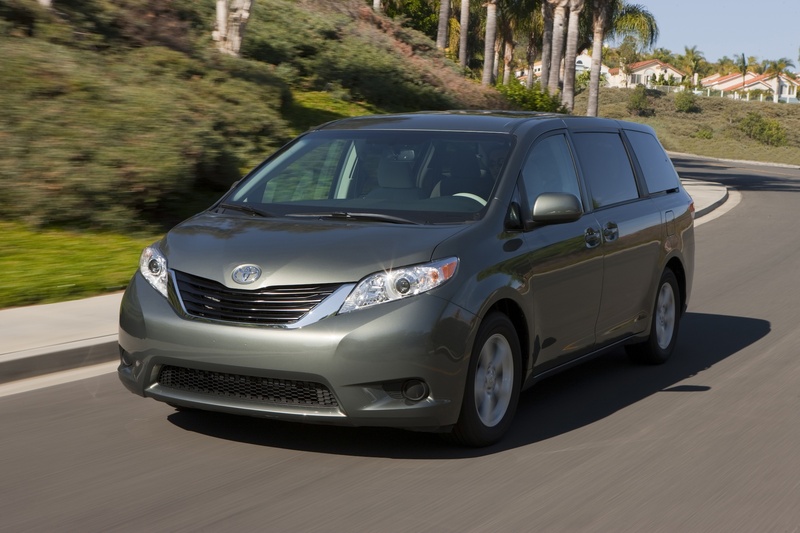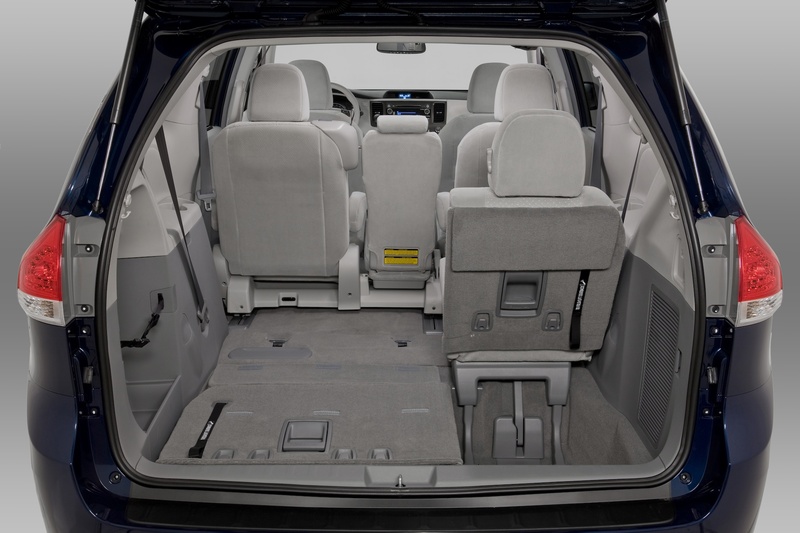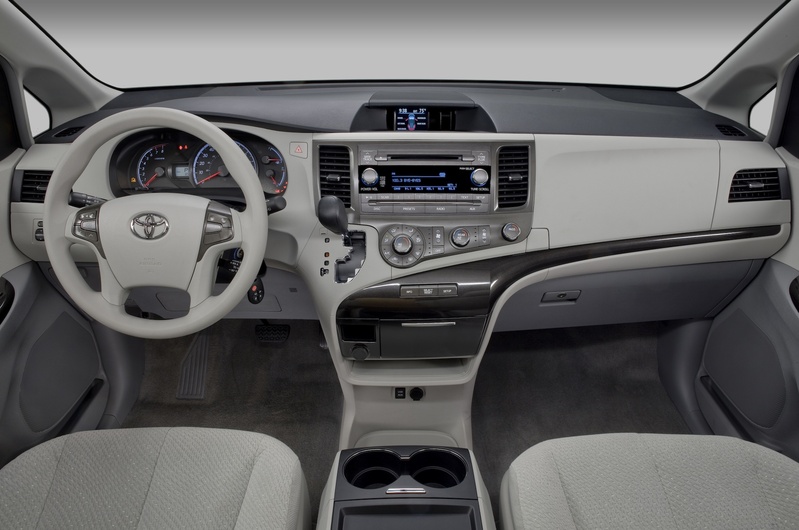Maybe soccer moms are simply smarter than the rest of us.
That was my conclusion after spending seven days with a 2011 Toyota Sienna minivan. Every time I drove, rode in, or crammed junk into the Sienna’s massive cargo compartment, the true beauty of a vehicle class called a “box on wheels” revealed itself.
It’s difficult determining when the first motorized boxes on wheels hit the road, but there’s no uncertainty about when the first minivans debuted. Although Volkswagen had been making a strange little box-like vehicle called the Microbus since 1949, Chrysler Corporation is credited with introducing the first real minivan in late 1983.
The 1984 Dodge Caravan and Plymouth Voyager had been known as “magic wagons” during their development, and they proved magical indeed for a company that was trying to claw its way back to profitability. Chrysler sold 210,000 minivans during their first year of production, far exceeding expectations.
Minivan models and sales grew steadily up until around 2000, when nearly 1.4 million were sold in the United States.
But by then, they had become scorned as much as desired. Their well-deserved popularity with families — particularly mothers who used them to tote kids to and from soccer practices and other activities — made them symbolic of stodginess and conformity to many consumers. In other words, they had as much sex appeal as an armadillo.
Crossovers — cars that look like SUVs — are the current darlings of consumers seeking seven- or eight-passenger capacity. That’s why Americans bought less than 650,000 minivans last year, according to industry statistics.
But Toyota, whose first minivan in 1984 followed right in the tire tracks of Chrysler’s dynamic duo, still believes in these versatile vehicles. It has backed its beliefs with the redesigned, third-generation, 2011 Sienna.
With distinctive styling, unsurpassed versatility and the only all-wheel drive system available in the current crop of minivans, the Sienna not only moves to the head of its class but also vies to snatch market share from crossovers.
Try finding a crossover that makes it as easy as Sienna does to move between rows of seats. Try finding one that so easily converts from seven- to eight-passenger seating or in which the second-row seats move fore and aft 23 inches to maximize legroom for second- and third-row occupants.
That feature really tickled 10-year-old Brandon and his buddy Patrick. Given the opportunity, they’d generally prefer to squeeze into the solo passenger seat of any two-seat sports car, but their first venture in the Sienna was revealing.
“Wow, this is like a limousine,” Patrick said.
“Yeah,” Brandon chimed in. “I can move the seat all the way back and stretch my legs as far as they’ll reach.”
The boys were amazed when I told them some Siennas can be ordered with a second-row “lounge seat” with a pop-up footrest, like the family-room recliner.
And when I mentioned another option — an entertainment center that can display one video source on a 16.4-inch panoramic screen or operate in a dual-view mode that enables one passenger to watch a movie and the other to, say, play a video game — Brandon was speechless.
Almost. After a pause to digest the possibilities on lengthy road trips he said, “Can we buy one of these?”
We would have plenty to choose from if we did. Sienna is available in five trim levels. The base and LE models can be had with a 2.7-liter four-cylinder or 3.5-liter V6. The V6 is standard on other models, and all-wheel drive is an option on LE, XLE and Limited models with the V6.
Even the least expensive Sienna includes cruise control, tilt/telescope steering wheel, three-zone air conditioning, an AM/FM/CD player with auxiliary input jack, remote keyless entry, three 12V power outlets, 10 or 12 cupholders, a 60/40 split rear seat that folds into the floor, and power door locks, windows and mirrors.
The step-up LE model, which I tested, adds steering wheel-mounted audio controls, a 3.5-inch display with backup camera and outside temperature, auto-dimming rearview mirror and retractable second- and third-row sunshades.
Also standard on the test car was a 187-horsepower, four-cylinder engine. It impressed me with its gustiness and real-world economy (the Sienna averaged nearly 23 mpg during my weeklong test), considering the Sienna’s 4,300-pound curb weight. The engine generally felt strong and capable even with four adults and three kids onboard.
It took a bit longer to pass on the highway than I like, but the Sienna never felt anemic or underpowered.
My only complaint about the engine, in fact, is that it sometimes felt too potent. The test vehicle’s throttle was touchy, causing the front wheels to chirp when starting from a standstill before the traction control kicked in. That happened a few times to two different drivers.
Everything else about the Sienna’s driving dynamics was pleasing. Bearing in mind that it’s a minivan, not a sports car, the Sienna steering feels responsive and accurate, its cornering is predictable, it delivers good grip with surprisingly little body lean in tight turns and it generally goes where it’s pointed so competently that its easy to forget this is a big box on wheels.
It’s a quiet one, too. The Sienna was as quiet as any minivan I’ve driven, and its ride comfort is right up there, too.
Versatile, well-rounded, accommodating and with no glaring compromises, the Sienna reminded this jaded auto writer what he once found so compelling about minivans — something soccer moms and dads have never forgotten.
Scott Wasser is executive editor of MaineToday Media. He writes a weekly auto column for the Sunday Telegram and other newspapers. He can be reached at swasser@pressherald.com.
Send questions/comments to the editors.





Success. Please wait for the page to reload. If the page does not reload within 5 seconds, please refresh the page.
Enter your email and password to access comments.
Hi, to comment on stories you must . This profile is in addition to your subscription and website login.
Already have a commenting profile? .
Invalid username/password.
Please check your email to confirm and complete your registration.
Only subscribers are eligible to post comments. Please subscribe or login first for digital access. Here’s why.
Use the form below to reset your password. When you've submitted your account email, we will send an email with a reset code.